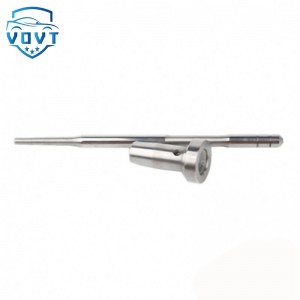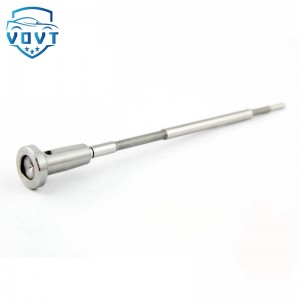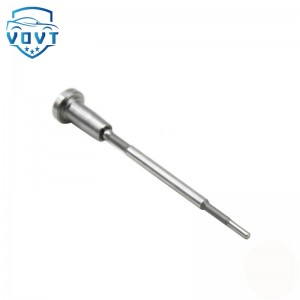New Made in China Common Rail Injector Parts C13 C15 C18 Control Valve Injector Valve
products description
| Reference. Codes | C13 |
| OE/OEM Codes | / |
| Application | / |
| MOQ | 5 PCS |
| Certification | ISO9001 |
| Place of Origin | China |
| Packaging | Neutral packing |
| Quality Control | 100% tested before shipment |
| Lead time | 7~15 working days |
| Payment | T/T, L/C, Paypal, Western Union or as your requirement |
Injector control valve
Structural composition
Solenoid valve: It is the core component of the control valve, which consists of a solenoid coil, an armature, etc. When the solenoid coil is energized, a magnetic field is generated, which attracts the armature to move, thereby controlling the opening and closing of the valve.
Valve seat and valve core: The valve seat and valve core cooperate with each other, and the valve core moves on the valve seat to control the flow of fuel by changing the gap between the two. Their matching accuracy is very high to ensure the accuracy and stability of fuel injection.
Spring: Usually a high-strength spring is used, which is sleeved on the valve core or valve stem. Its function is to quickly return the valve core to its position, close the valve, and stop fuel injection when the solenoid valve is powered off.
Control piston: It is connected to the valve core and moves up and down under the action of oil pressure to control the position of the valve core. Some injector control valves drive the piston movement by controlling the oil pressure changes above or below the piston, thereby controlling the opening and closing of the valve.
Working principle
Opening process: When the engine control unit (ECU) issues an injection command, the current passes through the solenoid coil of the injector control valve to generate a magnetic field. The magnetic field attracts the armature, driving the valve core to move upward against the spring force and open the valve. At this time, high-pressure fuel enters from the fuel inlet, flows through the gap between the valve core and the valve seat, and flows to the fuel injector, ready to be injected into the engine combustion chamber.
Closing process: When the ECU stops sending the injection signal, the electromagnetic coil is de-energized and the magnetic field disappears. The spring force causes the valve core to return quickly, close the valve, cut off the fuel supply, and stop injecting fuel.
Function
Accurately control the amount of fuel injection: According to the working conditions of the engine, such as load, speed, etc., the ECU controls the opening time and frequency of the injector control valve to accurately adjust the amount of fuel injection. For example, when the engine is running at high load, the control valve is opened for a longer time and the amount of fuel injection increases; at idle or low load, the opening time is shortened and the amount of fuel injection is reduced to ensure the power output and fuel economy of the engine.
Control injection timing: Ensure that the fuel is injected into the combustion chamber at the best time. The ECU accurately controls the opening time of the injector control valve based on signals such as the engine's crankshaft position and camshaft position, so that the fuel is injected at the appropriate time before the piston reaches the top dead center, fully mixed with the air and burned, thereby improving combustion efficiency and reducing pollutant emissions.























